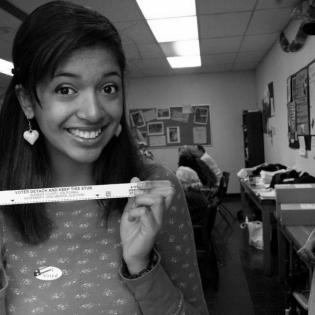Voting and the Common Good
Learners examine the statistics of voter turnout in the Federal Elections and from these statistics the learners draw some comparative conclusions.
The learner will:
- conduct research of the most recent Federal Election statistics and demonstrate the ability to depict the results of these statistics using charts or graphs.
- draw conclusions based on a comparison of voter data.
- identify how working as a class, they might positively influence the participation of future voters.
online access for students to research voting data, or a printout of current voting statistics
Write a bold statement expressing creatively how voting is an act of philanthropy.
US Census Bureau Voter Information
Federal Election Commission election data
United States Election Project
Instructions
Anticipatory Set:
Ask the students to respond to the following quote and discuss what "participating" means.
"Democracy is not something you believe in or a place to hang your hat, but it's something you do. You participate. If you stop doing it, democracy crumbles." - Abbie Hoffman
Arrange the learners into groups of three or four and have them create a list of ways people can participate in democracy.
Ask each group to choose a spokesperson and share their list with the class.
Point out that all of the ways they have listed contribute to the common good, and many of them involve giving time, talent and treasure (philanthropy). One of the easiest ways to participate is to vote.
Tell the groups that they are going to examine real data from the US Census Bureau and the United States Election Project concerning the percentage of voter turnout by category from a recent presidential election.
The Census Bureau and Federal Election Commission data are especially good for state-specific breakouts https://www.census.gov/topics/public-sector/voting.html
The United States Election Project is good for comparisons among demographic sectors over the last 30 years http://www.electproject.org/home/voter-turnout/demographics
Ask the students to consider these questions while reviewing the data:
- In each Characteristic category, which group has the lowest participation and which has the highest? Why do you think this is true?
- What conclusions can you draw from this data about the role of education in voting participation?
- Do you think overall, this data represents the kind or amount of "participation" that will prevent the democracy from "crumbling?' If not, what can you do about it?
- What groups from the charts might need to be targeted?
- How can you reach this group(s) with the important message about democratic participation through voting?
Bring the goups back together and have them share their answers to the questions.
Bring the class to the conclusion that voting is one way of sharing their voice for the common good.
The learners will be assessed based on their classroom participation and their group work (research, survey, and statistical depictions).
Take action to encourage adults to vote in the election.
Philanthropy Framework
-
Strand PHIL.II Philanthropy and Civil Society
-
Standard PCS 01. Self, citizenship, and society
-
Benchmark HS.4 Describe and give examples of characteristics of someone who helps others.
-
-
Standard PCS 05. Philanthropy and Government
-
Benchmark HS.3 Identify the relationship between individual rights and community responsibilities.
-
-
